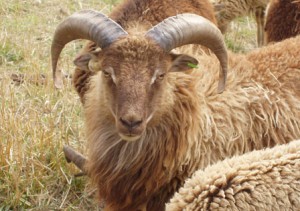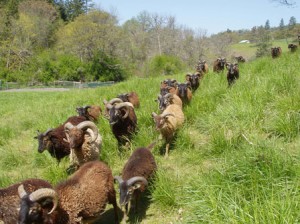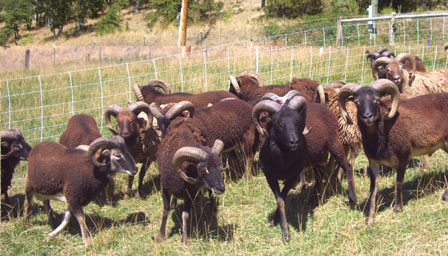Saltmarsh Ranch calling Red Sox dugout, “Our bullpen is ready, is yours?”
It’s post-season in major league baseball and breeding is about to begin on our Soay sheep farm. While the world awaits the (inevitable?) demise of the Cubs, we are pacing (mentally) in the dugout, wondering how our selection of rams to call up from the bull pen will turn out. Will our three British “starters” for our conservation breeding program be enough or should we designate a reliever right now to take over in the event of disease or accident?
Will Fenugreek turn out to be rookie of the year with our black and tan-carrying ewes? What do you think? Is this young fellow up to the task?The baseball analogy starts to break down, alas, when we talk about good numbers and bad numbers. The low ERA of a Roger Clemens is the reverse of what we want in a breeding ram’s Ewe-to-Ram Average in lambing. General managers and amateur baseball statisticians accumulate years, and occasionally decades, of data on pitchers. They can trace a pitcher’s development, prime seasons, and decline down to the patterns of individual pitches in single games. In our heritage sheep world, rams generally get one breeding season and that’s it. ERAs are calculated on only one trip to the mound.
What about stats on strikeouts, which figure prominently in deciding what pitcher to use? Not for us, thank you. We want every single ewe to get on base and hit a double — the exact opposite of the baseball types. If a breeding ram ever struck out with a ewe, it would be lost lamb revenue for us. Worse yet, by the time the strikeout was known, lambing would be over for the year, way too late to bring in a reliever.
Nor do we care one whit how many pitches a ram accumulates during the game, in fact, the more the better. Just put him out there and let him throw his best stuff. Last year Warwick serviced 22 ewes quite nicely and was ready for more, and we recently heard from another breeder who used one ram for her 40 ewes with good results. If it would make any difference, we probably would conjure up special cheers reminiscent of high school days.
With apologies to Wisconsin Badgers’ fans: “On Trenear, on Porkellis, on to victory. Bring your balls right down the field, boys, on to victory …”Pedigree and associated genetic ancestry is of course the single most important consideration for us in deciding which rams to use. We do our best to avoid family histories of rotator cuff and hyper-extended elbows. But we do like sons of proven fathers and are always on the lookout for the ovine equivalent of Cal Ripken Sr. and Jr.
On a less scientific level, but unavoidable in the age of marketing, we occasionally waste a little time wondering whether our breeding rams should sport goatees and ponytails, the baseball equivalent, I suppose, of sweeping horns.
Here are our big guys in the bull pen waiting for the phone to ring, meanwhile agreeably posing for our friend Leigh Hood. Will their offspring appeal to buyers? We sure hope so.
As I write this, I of course have no idea who will win the playoffs and whether we will win the lambing gender lottery next spring. What I do know is it’s time to finalize the breeding roster and take stock of our popcorn and beer supply. Game 1 of the World Series will be here before we know it and we put our breeding groups together next Friday. Batter up!
For now …


